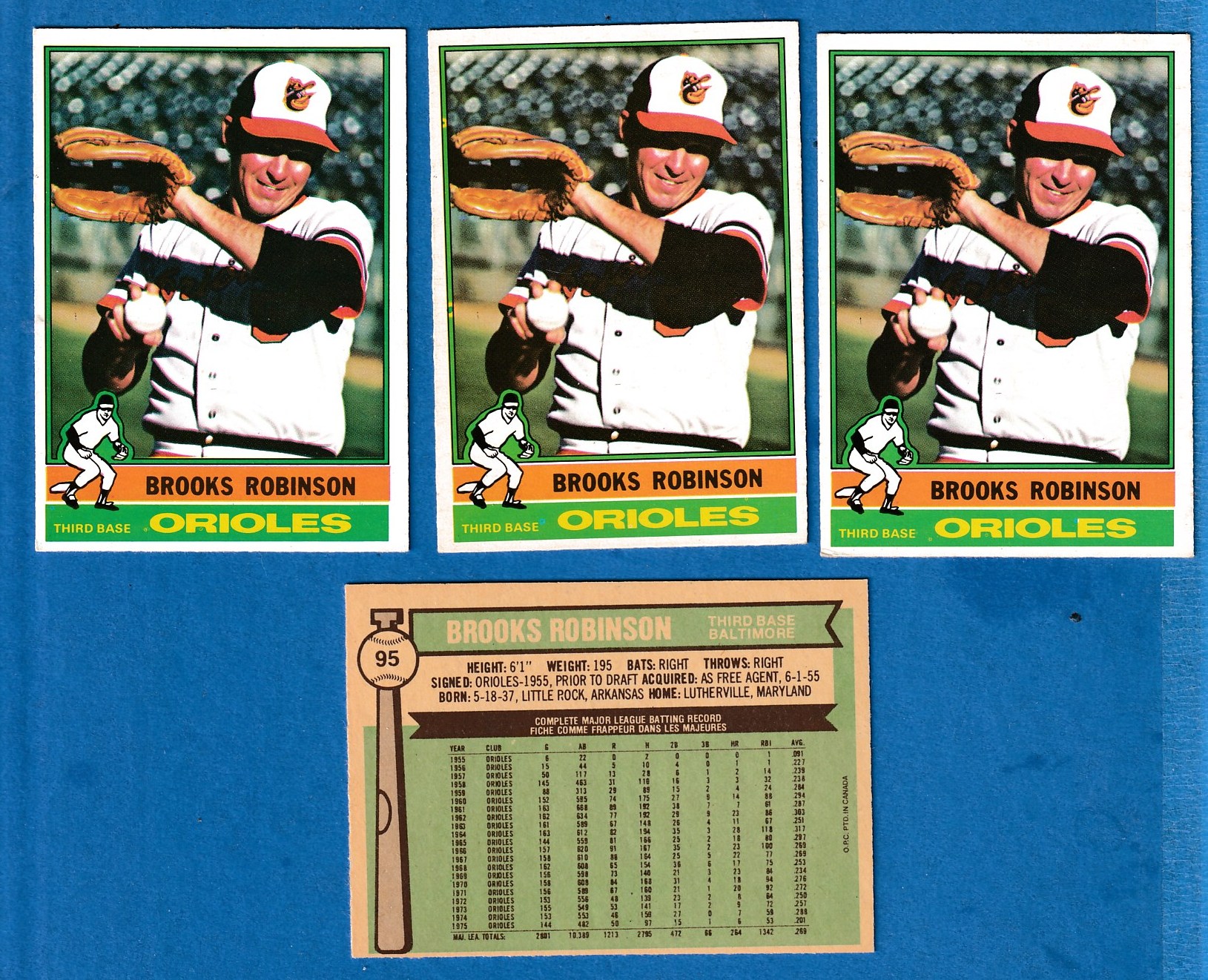1976 O-Pee-Chee/OPC # 95 Brooks Robinson (Orioles)
| Grade |
EX/MINT |
| Book Value |
n/a |
| Our Price |
$ 12.50
Add to cart
|


Below are short bits & pieces on sportscard & baseball trading card collecting.
Please wander around the website for more info, prices, values & images
on vintage baseball, football, basketball, hockey, sport and non-sports cards.
1933 Goudey Baseball Cards
Checklist & Values
1933 Goudey baseball cards were issued during the worst part of
The Great Depression. The set ended up at 240 cards (239 printed
in 1933 and one in 1934). In an effort to attract collectors,
several of the games top players were honored with multiple cards
including "The Great Bambino" who appeared on 4 different cards.
The Babe was once asked why he made more than the President of the
United States, the Babe answered simply: "I had a better year than he did."
The Elusive Nap Lajoie
One of the most important facts regarding the 1933 Goudey set was their
infamous marketing ploy. Goudey took "marketing" to a whole new level
to keep people buying packs by never issuing card #106. Collectors wrote
the Goudey Card Company complaining. They were rewarded with Goudey
sending them the un-issued card #106 (Nap Lajoie) in 1934.
Note: You may be on that page right now.
|

1970 Topps Baseball Cards
Checklist & Values
At 720 cards, the 1970 Topps set became there largest ever.
As is common with most Topps sets, the set was issued in
several series and as usual, the higher numbers ended up
being scarcer. The semi-hi's (#547 to #633) are scarcer
with the scarcest being the high #s (#634 to #720).
TOP ROOKIE was the Yankee's ill-fated catcher Thurman Munson.
Note: You may be on that page right now.
|

1973 Topps Baseball Cards
Checklist & Values
Topps added several interesting cards in 1973 starting
with card #1, a special card honoring the All-Time Home Run
Leaders. Also new was the All-Time All-Star subset
featuring Babe Ruth, Ty Cobb, Lou Gehrig and other
all-time greats on their own special cards.
TOP ROOKIES were Mike Schmidt, the Phillies super-star Hall-of-Famer
and the White Sox relief pitcher Goose Gossage.
Click for complete
1973 Topps Baseball card checklist, values and prices.
Note: You may be on that page right now.
|

Tobacco Cards
Starting approximately in 1886, sportscards, mostly baseball cards, were often
included with tobacco products, for promotional purposes and also because the
card reinforced the packaging and protected cigarettes from damage. These sports
cards are referred to as tobacco cards in the baseball card hobby. Over the next
few years many different companies produced baseball cards. Tobacco cards soon
started to disappear as the American Tobacco Company tried to develop a monopoly
by buying out other companies.
They were reintroduced in the 1900s, as American Tobacco came under pressure from
antitrust action and Turkish competition. The most famous and most expensive,
baseball card is the rare T206 Honus Wagner. The card exists in very limited
quantities compared to others of its type because Wagner forced the card to be
removed from printing. It is widely (and incorrectly) believed that Wagner did
so because he refused to promote tobacco, but the true explanation lies in a
dispute over compensation.
Soon other companies also began producing baseball and football cards. Sports magazines
such as The Sporting News were early entries to the market. Candy manufacturers
soon joined the fray and reflected a shift toward a younger target audience for cards.
Caramel companies were particularly active and baseball cards were one of the first
prizes to be included in Cracker Jacks. World War I soon suppressed baseball card
production.





